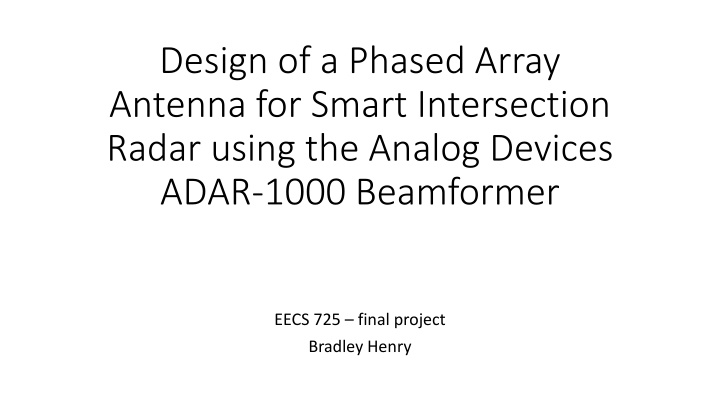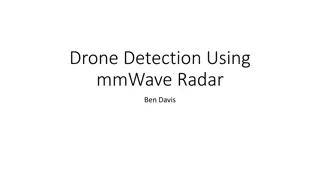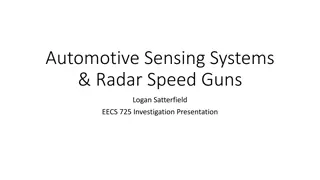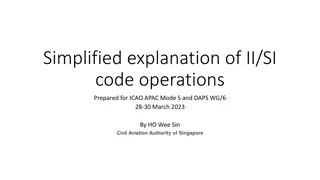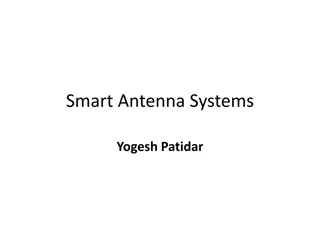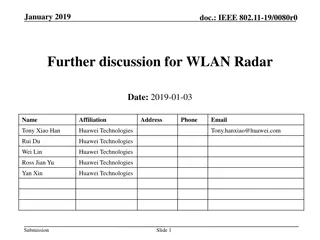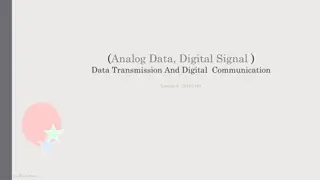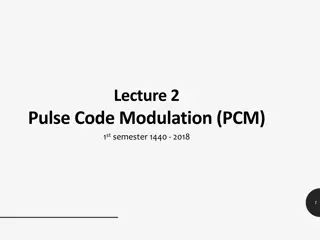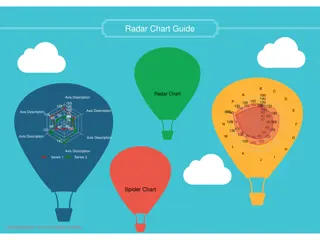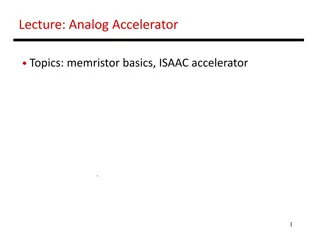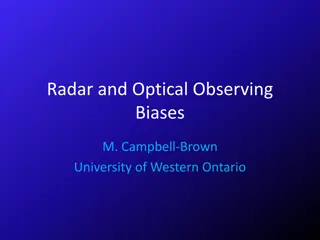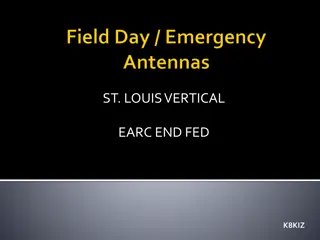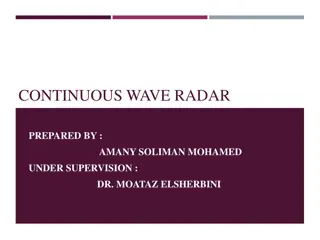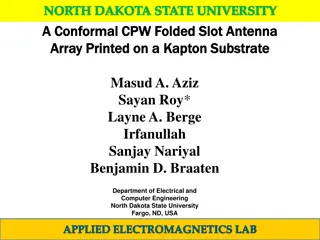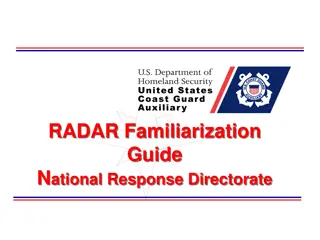Phased Array Antenna Design for Smart Intersection Radar Using Analog Devices ADAR-1000
Designing a phased array antenna system for a smart intersection radar project utilizing the Analog Devices ADAR-1000 beamformer. The system involves 4 independent phased arrays covering key directions in the intersection, with considerations for beam steering, beamwidth, and array configuration. Key physical design dimensions and the use of an 8-element phased array controlled by ADAR-1000 beamformers are highlighted. The project aims to achieve precise tracking of traffic targets on a per-lane basis in a smart intersection setup.
Download Presentation

Please find below an Image/Link to download the presentation.
The content on the website is provided AS IS for your information and personal use only. It may not be sold, licensed, or shared on other websites without obtaining consent from the author.If you encounter any issues during the download, it is possible that the publisher has removed the file from their server.
You are allowed to download the files provided on this website for personal or commercial use, subject to the condition that they are used lawfully. All files are the property of their respective owners.
The content on the website is provided AS IS for your information and personal use only. It may not be sold, licensed, or shared on other websites without obtaining consent from the author.
E N D
Presentation Transcript
Design of a Phased Array Antenna for Smart Intersection Radar using the Analog Devices ADAR-1000 Beamformer EECS 725 final project Bradley Henry
Smart Intersection dimensions and layout Smart Intersection dimensions and layout For this design problem, we assume lane widths of 12 feet, giving a sidewalk-to-sidewalk length of 72 feet The radar system is placed at the center of the intersection, suspended at a height of X feet 4 independent phased arrays are utilized to cover the entire intersection, each covering a single direction 72 ft. 72 ft.
Radar unit, physical design dimensions Radar unit, physical design dimensions w Side view, not to scale Primary physical dimensions which must be accounted for in radar design: Angle of the array tilt, (determines elevation angle) Height of Radar unit above intersection, X (in previous slide) Width of base unit, w (determines exact location of each array, since all the arrays cannot all co-locate at the intersection origin)
Phased array design considerations Phased array design considerations Design needs to be able to steer a beam from -45 to +45 for each antenna array Beamwidth should be sufficiently narrow as to uniquely capture traffic targets on a per-lane basis (beamwidth defined by 3dB, or half-power, width) 8 element array utilized, steers only in the azimuth (more sophisticated arrays may steer both azimuth and elevation) Each element in this array consists of 4 patch antennas, meaning each array will consist of 32 patch antennas Some elements of the design may change as logistics dictate in the design process, including dimensions and possible additions to the radar unit itself (particularly if pulsed radar is not useful for this design)
Example of an 8 element phased array as Example of an 8 element phased array as controlled by ADAR controlled by ADAR- -1000 beamformers 1000 beamformers Analog Devices CN0566 evaluation board This will serve as the starting point of the phased array design Uses 10.3 GHz frequency Uses 2 ADAR-1000 chips for array control *per Analog Devices documentation
Phased array principles of operation (in brief) Phased array principles of operation (in brief) Pictured here is an incoming wave off boresight, with array steered to 30 to maximize gain in the direction of the off-boresight wave. By careful selection of spacing between elements and frequency of operation, the necessary phase of the input to each element may be readily calculated. CN0566 design uses these dimensions and phase angles to steer the beam, but final design may change frequency, spacing, and possibly incorporate amplitude adjustment (per element). *per Analog Devices documentation
ADAR ADAR- -1000 Beamforming Integrated Circuit 1000 Beamforming Integrated Circuit Allows for the control of 4 elements at a time 2 ADAR-1000 chips are needed to control the 8 element array A minimum of 8 ADAR-1000 chips will be needed for the full intersection Can accommodate pulsed radar or continuous wave radar (depending on design considerations) Pulsed radar would work seamlessly in the half- duplex mode that this chip uses Continuous wave radar would double the number of ADAR-1000s required, as half-duplex operation is inappropriate for CW radar May operate at frequencies between 8 and 16 GHz Uses 6-bit phase control, giving 2.8 degree resolution in phase control per element 31 dB range of attenuation/amplification is available for each element *per Analog Devices documentation
Analysis to be performed Analysis to be performed Patch antenna array design Analysis of blind ranges for pulsed radar in one direction If pulsed radar is inappropriate for this design, double the ADR-1000 chips will be necessary to control always-on transmitter/receivers simultaneously (continuous wave), and may necessitate re-design of the patch antenna array and/or radar unit dimensions HFSS simulation of final patch antenna array in one direction
Additional design considerations beyond the Additional design considerations beyond the scope of this project scope of this project Mechanical Engineering: how to suspend the radar system at the height prescribed, in the location prescribed, in such a fashion as to be resistant to wind and weather Civil Engineering: what algorithm to utilize to optimize traffic flow, analysis of traffic data as gathered by the radar system, materials utilized in intersection construction (impacts backscattering coefficients) Imaging/detection DSP algorithms (this analysis will only give a system which collects data, not its interpretation) Software based control of beam steering, we assume perfect control (within the limitations of the ADAR-1000) for all analysis/simulation Down conversion of signal to baseband, any other necessary filtering steps Signal Integrity design considerations from a ruggedized base unit to the patch antenna arrays (all lines are assumed to be length-matched, controlled 50 impedance lines)
